WEEKDAY function - The function returns the weekday of a corresponding date in Excel
The following article introduces you to the WEEKDAY function - one of the functions in the date and time group function is very popular in Excel.

Description: The function returns the day of the week for the corresponding day. The return value is an integer between 1 (Sunday) and 7 (Saturday).
Syntax: WEEKDAY (serial_number, [return_type])
Inside:
- serial_number: Date value to determine the day, is a required parameter.
- return_type: The value that determines the return type, is an optional parameter with the following values:
+ return_type = 1 or skip -> Specify value = 1 (Sunday respectively) until 7 (Saturday).
+ return_type = 2 -> Specify value = 1 (2nd correspondence) until 7 (Sunday).
+ return_type = 3 -> Specify value = 0 (2nd correspondence) until 6 (Sunday).
+ return_type = 11 -> Specify value = 1 (2nd correspondence) until 7 (Sunday).
+ return_type = 12 -> Specify the value = 1 (3rd correspondence) until 7 (2nd).
+ return_type = 13 -> Specify the value = 1 (corresponding to the 4th) until 7 (the 3rd).
+ return_type = 14 -> Determine the value = 1 (corresponding to the 5th) to 7 (the 4th).
+ return_type = 15 -> Specify the value = 1 (6th order) until 7 (5th).
+ return_type = 16 -> Specify value = 1 (corresponding to the 7th) to 7 (the sixth)
+ return_type = 17 -> Specify value = 1 (Sunday) until 7 (Saturday).
Attention:
- Excel stores dates as sequential serial numbers to facilitate the calculation process.
- If serial_number is outside the base range price -> the function returns the #NUM! Error value
- If return_type is outside the range of values specified above -> the function returns the #NUM! Error value
For example:
Find the dates of the following dates in different return_type values:
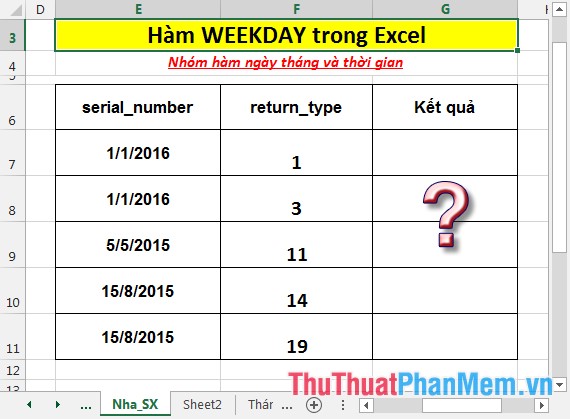
- In the cell to calculate enter the formula: = WEEKDAY (E7, F7).
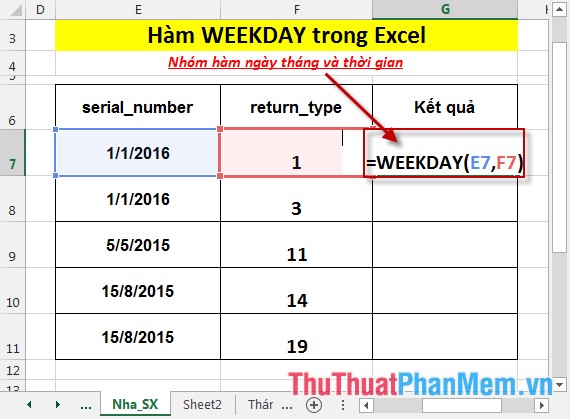
- Press Enter -> return value is:
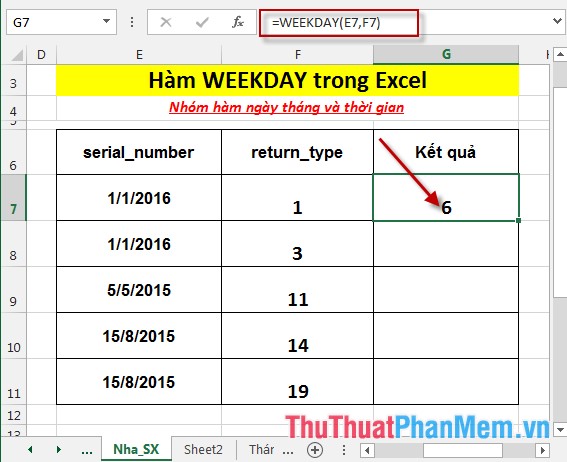
- With the same date value but different return_type return type -> for different results:

- In case of entering the wrong date data, here enter the month value = 15 -> function returns the error value #VALUE!
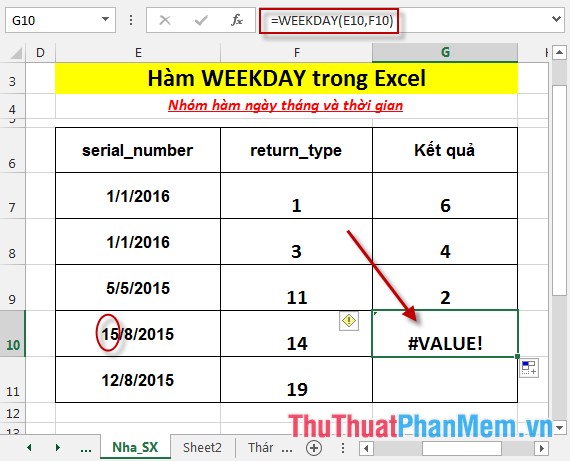
- If the return_type value is outside its range -> the function returns the #NUM! Error value
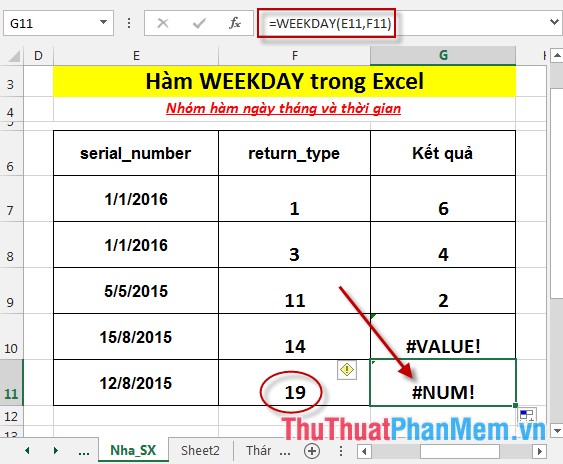
Above are instructions and some specific examples when using WEEKDAY () function in Excel.
Good luck!
You should read it
- DAY function - The function returns the date value of a specific date in Excel
- DATE function - The date function in Excel
- TODAY function - The function returns the current date value in the format in Excel
- COUPNCD - The function returns the next coupon date in Excel
- The DAY function - The function returns the day of the day, month and year in Excel
- YEAR - The function returns the year corresponding to a date in Excel
 WEEKNUM function - The function returns the week number of the year in Excel
WEEKNUM function - The function returns the week number of the year in Excel The WORKDAY function - The function returns a date before or after the start date of a number of working days in Excel
The WORKDAY function - The function returns a date before or after the start date of a number of working days in Excel The WORKDAY.INTL function - The function returns a date before or after the date starting with a custom weekend in Excel
The WORKDAY.INTL function - The function returns a date before or after the date starting with a custom weekend in Excel YEAR - The function returns the year corresponding to a date in Excel
YEAR - The function returns the year corresponding to a date in Excel YEARFRAC function - The function returns the fifth calculated by the number of whole days between two specific dates in Excel
YEARFRAC function - The function returns the fifth calculated by the number of whole days between two specific dates in Excel NETWORKDAYS.INTL function - The function returns the number of whole working days between 2 dates, specifying weekends in Excel
NETWORKDAYS.INTL function - The function returns the number of whole working days between 2 dates, specifying weekends in Excel